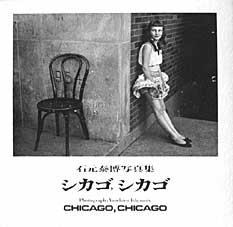ISHIMOTO Yasuhiro
 ISHIMOTO Yasuhiro 石元 泰博 (1921.6.14-2012.2.6) San Francisco, California.
ISHIMOTO Yasuhiro 石元 泰博 (1921.6.14-2012.2.6) San Francisco, California.
Fine-art photographer with ties to both Japan and the US. Sent to an internment camp in Colorado during World War II.
Major themes Chicago, architecture
Education Attended Univ. of California in 1940 until being interned at Armach, Colorado. Northwestern Univ. in Chicago 1946-48. Institute of Design, Illinois Institute of Technology, Chicago 1948-52 (B.S. degree 1952).
Career Parents were Japanese immigrant farmers. Raised in Kochi City, Kochi Pref. from age three. Studied agriculture in Kochi until 1939. Due to concerns of him being drafted in Japan, his mother urged him to return to America which he did in 1939.
Lived with a farmer and went to Univ. of California in 1940 until being interned at Armach, Colorado when war between Japan and America broke out. Since he had no assets, he did not lose anything unlike other Japanese-Americans who were interned.
He stuck with a group of shutterbugs in the internment camp. After being released in 1944, he went to Chicago after being told that he was free to go anywhere except the coastal cities. Joined a camera club in Chicago.
Studied architecture at Northwestern Univ. in Chicago 1946-48 where he met photographer Harry Shigeta and took up photography seriously. Studied under Harry Callahan and Aaron Siskind at the Institute of Design, Illinois Institute of Technology, Chicago 1948-52 (B.S. degree 1952).
Freelance photographer in Tokyo 1953-58; Chicago 1958-61, and Tokyo since 1961 after moving back to Japan. Naturalized as a Japanese citizen in 1969. Instructor at Kuwazawa Design School 1962-1966 and Tokyo Photographic College 1962-1971. Professor at Tokyo Zokei Univ. Photo Dept. 1966-1971.
With ties to both Japan and America, Ishimoto gained recognition in both countries. He took an interest in traditional Japanese architecture, starting with photographs of the Katsura Palace in Kyoto. (Katsura was subsequently published by Yale Univ. Press.)
Also photographed the Ryokai Mandala at the Shingon-in, Toji Temple in Kyoto. The photos showed detailed close-ups of the Mandala.
Ishimoto Yasuhiro Photo Center at the Museum of Art, Kochi will open in 2021. Ishimoto had donated his images to this museum.
Awards Young Photographers Contest Prize, Life magazine 1950; Moholy-Nagy Prize, Chicago 1951, 1952; Society of Japanese Photography Critics Prize 1958; Mainichi Art Prize, Tokyo 1970; Japanese Minister of Education Prize 1978; Annual Award, Photographer Society of Japan 1978; Medal with Purple Ribbon, Tokyo 1983; Award of the Year, Photographic Society of Japan, 1990; Distinguished Contribution Award, Photographic Society of Japan, 1991; Order of the Rising Sun, Gold Rays with Rosette, 1993.
Further reading: The Yasuhiro Ishimoto Photography Collection Finds a Home in Kochi - by Alice Gordenker
Book review below.
Chicago, Chicago
 Ishimoto's classic photo book from 1969 showing striking B/W photos taken in Chicago, Illinois. Premium-priced book.
Ishimoto's classic photo book from 1969 showing striking B/W photos taken in Chicago, Illinois. Premium-priced book.
Published: 1969.10.20
Publisher: Bijutsu Shuppansha
ISBN: -- Price in Japan: ¥6,800 (original)
Qualities: Hard cover, slipcase, B/W photos Size: 28x28cm, 223 pp. Language: Japanese & English
Large and heavy book of over 200 photos of Chicago taken from 1960 to 1962. This is one of Ishimoto's masterpiece works.
The book is divided into seven parts. Part 1 shows photos of buildings being torn down, modern high rises, and people on the streets. Later you see facades of buildings, billboard and neon signs, and storefront ads. We have to remember that the photos were taken during the 1960s, so the cars and fashions of the day look quite nostalgic.
Part 2 shows presidential campaign rallies with people holding up placards and posters, and American flags in various places.
Part 3 are mostly images of black children and teens in rundown neighborhoods.
Part 4 are closeup portraits of black children, and Part 5 show summer shots of people at the lakeside beach.
Part 6 are pictures of automobiles. If you like classic cars from the '60s, these photos will be of interest.
Part 7 are surreal compositions of street art and advertising, real-life people, and random scenes. There's also a religious theme.
Unfortunately, there are no photo captions so we don't know the time, place, and occasion of the photos. Although there's text written by Harry Callahan, Shuzo Takiguchi, and Yusaku Kamekura, there is no essay by Ishimoto himself. There must be a lot of anecdotes and stories behind this project and photos, but they are left to our imagination. (Reviewed by Philbert Ono) Reviewed on: 2004-01-12